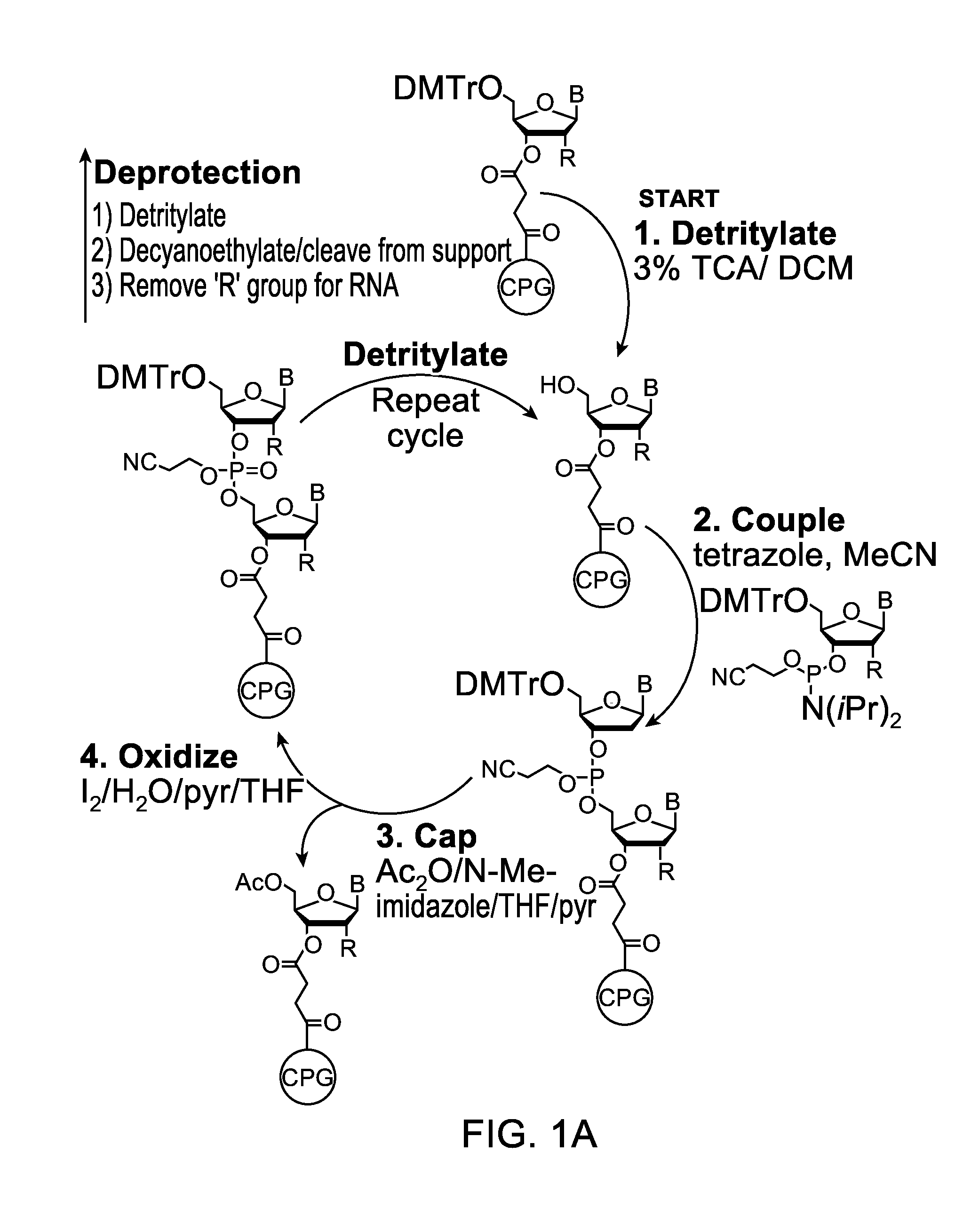Novel methods for the synthesis and purification of oligomers
a technology of oligomer and synthesis step, applied in the field of reagents, synthesis and purification of oligonucleotides, can solve the problems of inability to purify longer oligonucleotides, the coupling step is never 100% complete, and the method is expensive and time-consuming
- Summary
- Abstract
- Description
- Claims
- Application Information
AI Technical Summary
Benefits of technology
Problems solved by technology
Method used
Image
Examples
examples
[0132]Embodiments of the invention will be illustrated with the following examples. These examples are for illustration only and are not meant to limit the scope of the invention. Furthermore, one skilled in the art would appreciate that various variations and modifications are possible from these examples without departing from the scope of the invention. For example, the linkers used may be substituted with another linker with longer or shorter linkage or with a different types of linker. Similarly, while these examples use phosphoramidite functional groups, one skilled in the art would appreciate that similar reagents may be prepared with an H-phosphonate moiety, using procedures known in the art.
[0133]Scheme 1, shown below, illustrates a synthetic scheme for the synthesis of an analog of compound 1 described above. Briefly, 1,5-cyclooctadiene is reacted with a diazo acetate to form a fused cyclopropyl-cyclooctene structure 3476-31, the ester functional group of which is reduced ...
PUM
| Property | Measurement | Unit |
|---|---|---|
| structure | aaaaa | aaaaa |
| length | aaaaa | aaaaa |
| short nucleic acid | aaaaa | aaaaa |
Abstract
Description
Claims
Application Information
 Login to View More
Login to View More - R&D
- Intellectual Property
- Life Sciences
- Materials
- Tech Scout
- Unparalleled Data Quality
- Higher Quality Content
- 60% Fewer Hallucinations
Browse by: Latest US Patents, China's latest patents, Technical Efficacy Thesaurus, Application Domain, Technology Topic, Popular Technical Reports.
© 2025 PatSnap. All rights reserved.Legal|Privacy policy|Modern Slavery Act Transparency Statement|Sitemap|About US| Contact US: help@patsnap.com



